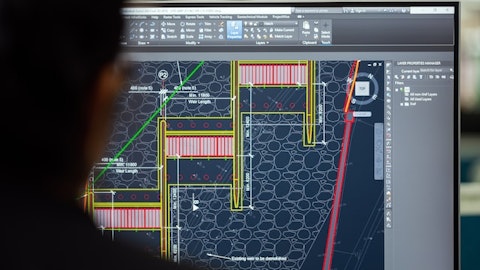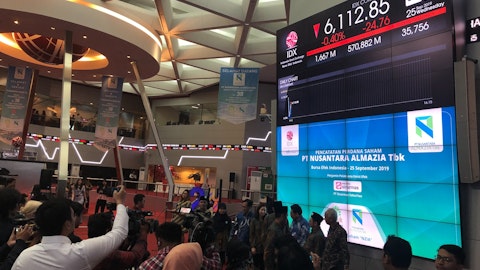Rich Schlenker: Josh, I want to add in here. It is important for everybody to understand that most of our worker – as a company we don’t run a backlog report. We don’t have multiyear contracts for which we are working off and doing it. So, when we are developing our guidance and our forecast, we are going out to our employees and to our business units and getting a forecast for the next 10 weeks or so. And certain areas might have visibility and certain demand and things that are happening around certain projects beyond them. But a lot of it is where is the market going. Yes, there seems to be elevated amount of litigation or product launches or where they are in their product life cycle, what are those trends and where are they going.
We also then, as Catherine and I are trying to develop that guidance and looking forward, need to be looking at the current market trends and doing that more than we are looking at a particular backlog report. On the other hand, this is a portfolio of projects to remember. We do 8,000-plus projects a year, 20% of those make up 80% of our revenues, very traditional model. And so we are reliant upon that sort of nice broad portfolio across every sort of major industrial industry across a very diverse set of clients within each industry and then a – then multiple projects within those clients at times within those industries and that is what makes it up. And many of the projects we are working on today will definitely be going in the second quarter, third quarter and some in the fourth quarter and on to 2025.
But the ability that something could settle is always out there. It will happen, but there is also the regular flow of business coming in. So, we are needing to develop our guidance and such based on that market knowledge that we are collecting in from our people who are out in front with our clients.
Josh Chan: Okay. That’s helpful. Thank you both for the color and your time.
Catherine Corrigan: You’re welcome.
Operator: The next question is from Tobey Sommer with Truist. Please go ahead.
Tobey Sommer: Thanks. I was wondering if you could discuss consumer electronics as a category over time, the extent to which it grew to be sort of a larger category and industry vertical for the company and the extent to which it’s normalized, sort of if we could just talk about the building and then maybe the arc down as we read more and more about global tech firms focused on profitable growth and a little bit less of the moon-shots that have characterized prior years.
Rich Schlenker: Yes. Thanks for that. It is a very interesting evolution that’s occurred in our firm. It really started a little over 20 years ago that we started to get involved to that industry, and that industry really started to evolve. And many of the issues that they initially had, which is still a big part of what we do for them today is around batteries or energy storage in those devices. And that was one of their most complex challenges they had in the late ‘90s and early 2000s. And it still remains their – one of their most challenging components that they have today when you think about how those components have evolved. But what we did in that early part was it was very focused in a complex area for which they inside their organization didn’t really have the expertise in that new technology that was coming out, and we could – and we were experts in failure analysis and did it for them.
As they wanted to learn from that and build that back into their design cycle and do it prelaunch and build that in, the work started to grow into how we could help clients in developing more reliable and safe products through that period. And that really was the acceleration of our – that really allowed this to go from a couple of percent of our revenues in 2000 probably to begin to accelerate and grow to nearly 10% probably plus of the business in the early 2010s and beyond. That was there as we started to get into the other components of their device, all of those questions about bringing in new types of ceramics and glasses and electronics and doing all of that, they began to realize the breadth of Exponent’s expertise and how we could again move upstream for them instead of just reacting on a failure analysis basis.
And really over that sort of 10-year period of time, we really across the industry became a trusted advisor, moved upstream. We are helping them in their design process, helping them evaluate suppliers, helping them as products were being designed and developed, identify failure modes and how to correct and address those. As that evolved, we were very hardware-driven at that point in time. And as we got – as clients wanted to begin and move in the early days of really using biometrics and other algorithms or AI at the early stages, they are into their products. They needed to collect and validate these functions within their devices. And to be able to do that and know that you could launch a product that was not going to have any biases in it and the marketplace became a key driver as you move from thumbprint recognition to facial recognition and beyond.




